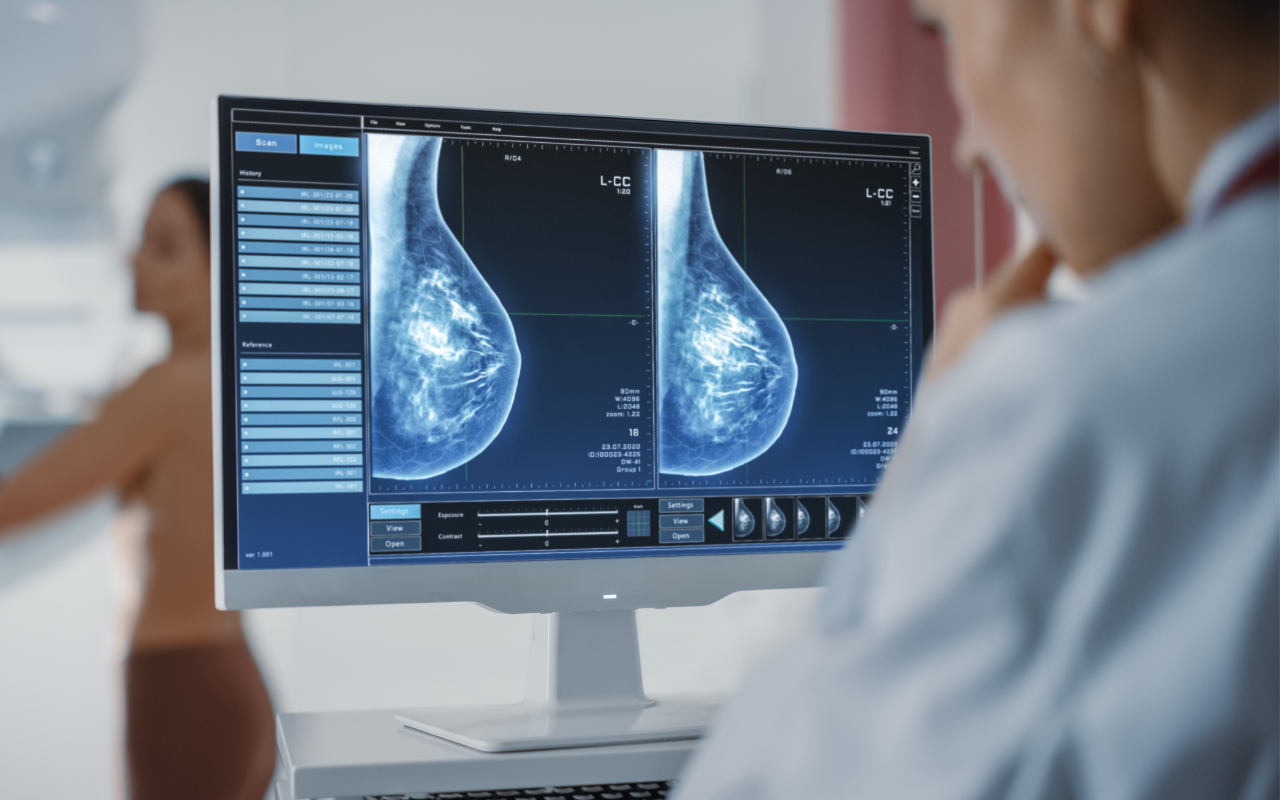A new trial aims to investigate the potential harms and benefits of notifying Australian women of the risks associated with breast density during routine breast screening.
A randomised control trial undertaken in Queensland aims to examine the longer term effects of notifying women about breast density in relation to breast cancer risk factors.
The trial, which commenced in September 2023 in BreastScreen Queensland clinics, has been outlined in a study protocol published in the Medical Journal of Australia.
Breast density — the ratio of fibro-glandular tissue to fatty tissue — can be an independent risk factor for breast cancer and can also affect the accuracy of mammogram reporting, due to dense tissue and tumours both appearing white in mammograms.
“There has been continued international debate surrounding the pros and cons of widespread breast density notification,” Dr Brooke Nickel, lead author and National Health and Medical Research Council Emerging Leader Research Fellow, told InSight+.
The researchers hope the evidence of the study will inform best practice and policy for breast screening in Australia and abroad.
“While there has been research on the impact of notification on women, providers, and the health system (mostly post-mandate in the United States), our trial is the first in the world assessing the impact of notifying (versus not) using a randomised design, and to also test different ways of informing women that they have dense breasts on mammograms,” Dr Nickel said.
“This will provide the most robust evidence on both benefits and harms of notifying density in an unnotified population, including effect over time (+2 years).”

Measuring the impact on patients
The study aims to measure the psychological outcomes of notifying patients about breast density (ie, whether the patients feels anxious, confused or informed), and also whether notification influences health service use (ie, follow-up general practice consultations and supplemental breast screening).
Study participants who are notified of breast density will be divided into two groups, with one group receiving information about breast density in written form and the other group being given a link to an informative video, in order examine whether the mode of communicating information to patients has any impact.
The groups will then be followed up at eight weeks, 12 months and 27 months to explore the patients’ experience with breast density notification.
“Assessing psychosocial outcomes and health service use in the trial is important to understand the direct impact this has on Australian women and the health system,” Dr Nickel said.
“While we already know that most surveyed women want to be told their breast density, we currently have weak/limited evidence on important psychological outcomes including whether it makes women anxious and whether it prompts further care.”
Informing national policy
Currently, there is no national policy on optimal management of notifying women of breast density, with only Western Australia and South Australia requiring patients to be assessed and notified of breast density.
The researchers hope the findings of the study will support BreastScreen Australia in building best practice policies for notifying women of breast density in the most effective way.
“Having a consistent policy across the Australian states and territories on breast density notification would be ideal,” Dr Nickel told InSight+.
“Our trial will provide evidence to help map out consequences to inform future clinical pathways, including use of supplemental screening, and ensure policy on this issue maximises benefit and minimises harm.
“We hope that our trial findings will assist future recommendations in Australia.”
Read the study protocol in the Medical Journal of Australia.
Subscribe to the free InSight+ weekly newsletter here. It is available to all readers, not just registered medical practitioners.

 more_vert
more_vert
The goal…. not to alarm but inform.
Pro choice is good if you have money. Therefore further imaging would need to be free and easily available to all.
The problem is just what is a “dense breast”? It is like asking what is a tall person – there is no universal threshold.
Our work is showing that only the very few percent of all women who have have extremely dense breasts need be alarmed – below that the increased risk is minimal especially in terms of absolute risk.
But all of this needs to be understood and thought through. That is one of the aims of our NHMRC Centre of Research Excellence in breast cancer screening.
Aah, the paternalism of many in the population breast screening industry is captured here. They only see the forest and not the trees and that’s how they pose a risk to each individual woman’s health.
I concur with Anonymous at 16/10/23, 7.33am. Tell the woman undergoing screening, then and there, that an ultrasound is recommended in order to capture a better image because she has dense breasts which can impede the reading of a mammogram.
Precede this by giving each woman a pamphlet about breast density. Explain that it could be recommended they also undergo an ultrasound if she is found to have dense breasts from the mammogram.
This will never happen because governments always opt for the cheapest approach.
keep it simple
if breasts are dense a mammogram alone can miss lesions
add an ultrasound and do inform patients a breast MRI or CEM are available, not necessarily rebated, so they choose